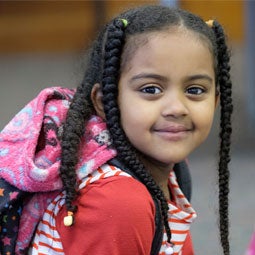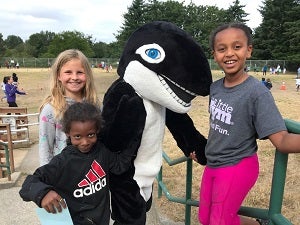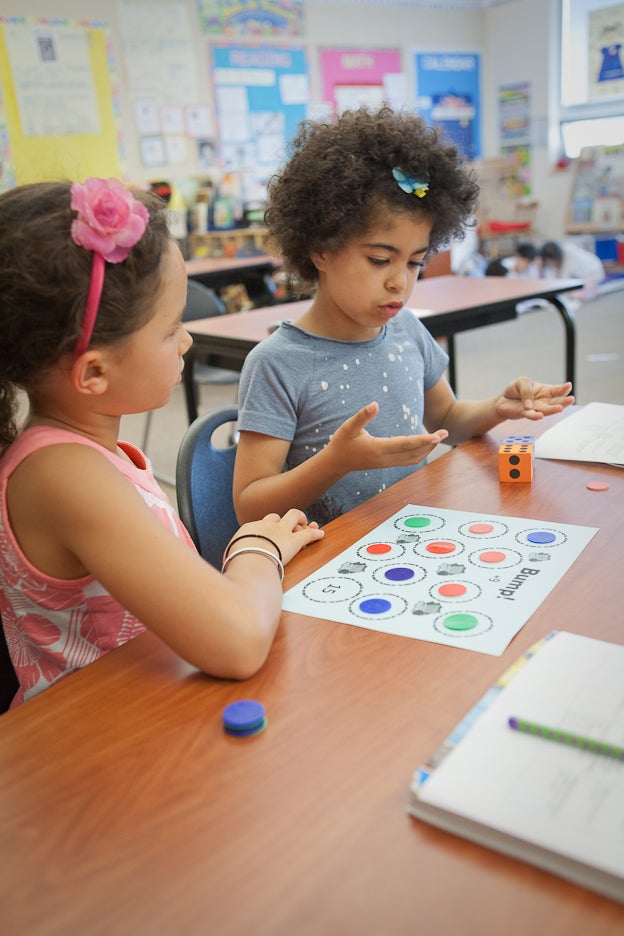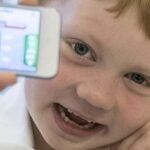Kindergarten
A Family Guide to Kindergarten
In every grade, SPS’ core work is supporting student learning. We believe it is our responsibility to do whatever it takes to ensure that every child, regardless of race, gender, socioeconomic status, language proficiency, learning style or disability, achieves to their highest level.
Your child is starting the elementary school journey, and you may have a lot of questions about how they will do in a classroom group, whether they’ll make friends, or how they will manage in a new environment.
You may ask: Are they ready? Will their teachers know how to make them feel comfortable, calm or challenged?

This is a time for letting go so your child can learn to be part of a new community.
With teachers, classmates, and with you, kindergarten students will develop the skills they need to read, write, speak, count, solve problems, ask questions, and learn about the physical and social worlds.
This year you should work closely with teachers to understand the skills and habits your child needs to grow as a learner.
When you share about your child with teachers and school staff, you can learn how your child interacts in a group, with adults, and with children different from them. Teachers gain ideas about how to help your child by hearing from you about their strengths and challenges.
Important Dates
January Before Kindergarten
September
- Family Connection Conferences
- 1st day of school
November
- Parent-Teacher Conferences
December
- End of 1st Trimester; 1st Progress Report Available
March
- End of 2nd Trimester; 2nd Progress Report Available
June
- End of 3rd Trimester; 3rd Progress Report Available
Student Progress Reports
Though report cards may be brand new to you, your child will get one about every three months. There are three terms, called trimesters, each year.
It will be important for you to learn about grade level expectations. Teachers and families should talk together about goals for learning social-emotional skills, language arts, math, science, social studies, physical education and arts. Each area has a progress report section.
How to Access Progress Reports
Families will use The Source to view Student Progress Reports.
Parent and guardians can create an account with the email on record at their student’s school.
Student Success by Subject
Social Emotional Learning
At Seattle Public Schools we believe that social emotional learning prepares students for learning and life.

Social emotional learning (SEL) helps children:
• Manage emotions, show empathy
• Develop a healthy identity
• Make responsible decisions
• Have positive relationships
• Contribute to their community
These skills are important for learning and life.
At school, students learn and practice SEL skills throughout the day.
Reading and Writing
In English language arts (ELA), kindergarten students learn to:
- Name, print, and determine sounds of all upper and lower-case letters
- Begin to read and understand text and figure out meaning of new words
- Retell what is read, using key details from the text
- Ask questions about their reading
- Describe characters, settings, and events in stories
- Write, draw or dictate to a helper to communicate for different purposes
- Develop writing by adding details
- Participate in collaborative conversations with diverse partners about kindergarten topics and texts with peers and adults
Encourage reading at home with your child. Read to them or listen to them read every day.
Math
In kindergarten math, students will build on their foundational understanding to:

- Know number names and the count sequence within 100
- Count to tell the number of objects and compare quantities up to 20
- Compare numerals within 10
- Understand concepts of putting together (add) and taking apart (subtract)
- Learn addition and subtraction facts within 5
- Compose and decompose numbers 11 to 19 to gain foundations of place value
- Identify and describe 2 dimensional and 3 dimensional shapes
We believe all students have mathematical brilliance. Your child’s teacher seeks to cultivate brilliance to develop your child into a mathematical thinker and problem solver. Your child will see who sees the value of math in their life.
Your child will learn and develop mathematical ways of thinking through (mathematical practices). Some examples of math practices are using math to model authentic situations, persevering in solving problems, constructing, and critiquing mathematical justifications and representing mathematical ideas visually.
Science
What are kindergarteners learning in science?
This is a time for transition in science education, with teaching and learning focused on three key areas in Washington state Science Learning Standards:
- Science/engineering practices used by professionals to explain the world or solve problems
- Core ideas that include fundamental scientific knowledge
- Crosscutting concepts frame scientific thinking across life, earth/space, physical sciences.
Your child’s report card shows performance expectations, for what students should be able to do by the end of a unit. The three dimensions are woven into each performance expectation.
Get outside together, taking time to notice, appreciate, and wonder about the natural world.
Social Studies
What’s important about kindergarten social studies?
Social studies is about human relationships and societies. At each grade level, students learn about cultures and communities. In kindergarten, the classroom community is important.
The report card shows two areas of social studies that you and your child can discuss this year:
- Civics: Understanding the purpose of rules in the classroom and school community
- History: Creating timelines showing events in order (a sequence)
Physical Education
In physical education (PE), students build movement skills, knowledge, fitness, social well being, and confidence so they can enjoy a healthy, active lifestyle. Seattle Public Schools is committed to providing a quality physical education program to help students develop in these areas.
Our PE standards are based on motor and movement patterns and skills, as well as concepts like physical literacy, which is the ability, confidence, and desire to be physically active for life. PE is an instructional program, which makes it different from recess, free play, recreational sports, or athletics.
PE teachers work with general education teachers to provide high quality instruction for an average of 100 minutes per week, which is required by Washington state law. Schools organize PE times in different ways, but all students should be learning about their physical selves all year long!
Visual and Performing Arts
Research shows that students with an arts education are more engaged, do better in school, and are more likely to graduate and participate in community life. In Seattle Public Schools, we want every student to receive a comprehensive, predictable arts education during their K-12 years.
Each elementary school offers different arts programs, from possibilities including visual arts, general music, theatre, dance, or instrumental music.
Progress report standards come from the Washington state Arts Learning Standards, which focus on aspects of artistic process:
- Creating: developing new artistic ideas and work.
- Performing: interpreting and presenting artistic ideas / work
- Responding: understanding and evaluating meaning in the arts
- Connecting: Relating personally to artistic ideas and work
The arts are a core subject!
Make art together!

